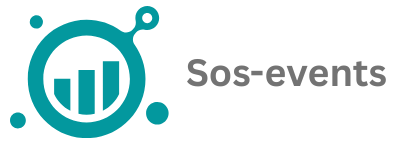In today’s fast-paced digital world, creating an efficient workspace is like finding the holy grail of productivity. With distractions lurking at every corner—like that tempting cat video or the latest meme—it’s crucial to master the art of working smart. After all, nobody wants to spend their day frantically searching for that one file buried under a mountain of digital clutter.
Table of Contents
ToggleKey Benefits Of A Digital Workspace
Digital workspaces provide numerous advantages. They enhance productivity while addressing the evolving demands of modern work environments.
Increased Collaboration
Increased collaboration stands out as a primary benefit. Digital workspaces facilitate real-time communication, enabling teams to connect regardless of location. Tools like instant messaging and video conferencing support seamless interaction. Shared documents allow multiple contributors, ensuring everyone stays in sync. Many organizations report up to a 25% increase in project completion rates due to improved teamwork. Organizations can foster a culture of innovation by allowing diverse ideas to merge effectively.
Enhanced Flexibility
Enhanced flexibility significantly impacts employee satisfaction and performance. Workers can choose when and where to complete their tasks, leading to a better work-life balance. With access to cloud-based tools, employees can access files from any device, simplifying remote work. Surveys indicate that 70% of employees feel more productive when given autonomy over their schedules. Offering such flexibility allows businesses to attract top talent and reduce turnover rates. Choosing to implement a digital workspace also positions organizations to adapt quickly to market changes.
Essential Digital Workspace Tools

Digital workspaces thrive on the right tools, enabling smoother collaboration and efficiency. Utilizing these tools plays a crucial role in achieving a productive environment.
Communication Platforms
Effective communication platforms streamline interactions among team members. Tools like Slack and Microsoft Teams promote instant messaging, video calls, and file sharing. These platforms allow for organized communication through channels, enhancing information flow. Utilizing integration with other applications boosts overall productivity. A cohesive tool helps decrease email overload and ensures quick access to messages.
Project Management Software
Project management software is vital for tracking tasks and deadlines. Tools like Trello and Asana provide visual boards and lists to monitor progress. They allow team members to assign tasks, set deadlines, and communicate updates in real time. Prioritizing tasks becomes manageable, as project management software offers clear views of project timelines. Adopting such tools fosters accountability and keeps projects on track.
Cloud Storage Solutions
Cloud storage solutions offer reliable data accessibility and security. Services like Google Drive and Dropbox enable easy sharing of documents among team members. Flexible storage options enhance collaborations and ensure that files are accessible from anywhere. Security features protect sensitive information, while version control maintains document integrity. Utilizing cloud storage streamlines file management and enhances productivity within teams.
Best Practices For Digital Workspace Management
Creating an efficient digital workspace enhances productivity. Implementing best practices ensures that employees can focus on their tasks without distractions.
Setting Up A Productive Environment
Prioritize a dedicated workspace that fosters concentration. Choose a quiet area free from interruptions. Utilize ergonomic furniture to promote comfort during long hours. Organize essential tools and resources for easy access, such as notepads and chargers. Personalize the space with motivating elements, like artwork or plants. Adjust lighting to reduce eye strain; natural light boosts mood and energy levels.
Maintaining Work-Life Balance
Establishing clear boundaries between work and personal life is crucial. Designate specific hours for work and unplug outside those times. Use digital tools to set reminders for breaks, allowing time to recharge. Encourage regular check-ins with team members for support and accountability. Incorporating flexible schedules helps accommodate personal commitments, promoting overall well-being. Practicing mindfulness techniques such as meditation can also enhance focus and reduce stress, leading to a healthier work-life dynamic.
Overcoming Common Challenges
Digital workspaces often present challenges that can affect productivity and security. Addressing these issues is essential for maximizing effectiveness.
Dealing With Distractions
Distractions can significantly hinder focus and efficiency. Social media platforms and entertainment options frequently divert attention from work tasks. Implementing digital tools such as website blockers helps minimize these interruptions. Establishing designated work hours fosters a structured environment, further reducing temptation. Regular breaks can also enhance concentration and refresh the mind. Utilizing headphones can drown out background noise, creating a more conducive workspace. Maintaining a clear list of priorities ensures that tasks receive the attention they deserve.
Ensuring Cybersecurity
Cybersecurity remains a critical concern in digital environments. Organizations must adopt strong password policies to protect sensitive data. Multi-factor authentication (MFA) adds an additional layer of security, making unauthorized access more difficult. Regularly updating software and applications reduces vulnerabilities that hackers exploit. Providing employees with cybersecurity training empowers them to recognize potential threats and phishing attempts. Encouraging the use of secure networks ensures that information stays protected, especially during remote work. Regular audits of security practices can help identify areas for improvement and bolster overall safety.
Embracing the digital workspace is essential for modern productivity and collaboration. By implementing the right tools and practices, individuals and teams can navigate distractions and enhance their efficiency. Prioritizing a dedicated workspace and establishing clear boundaries fosters a healthier work-life balance.
Moreover, focusing on cybersecurity measures ensures that sensitive information remains protected. As organizations adapt to the evolving work landscape, they’ll find that a well-managed digital workspace not only boosts productivity but also attracts top talent. Adopting these strategies will empower teams to thrive in an increasingly digital world.




